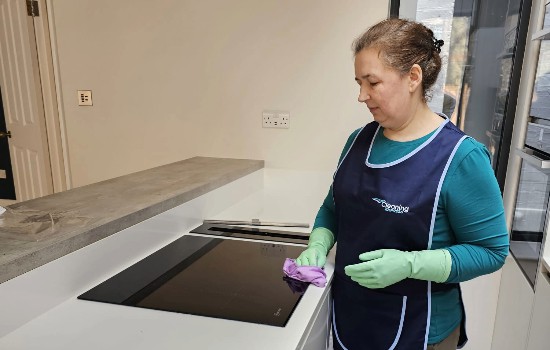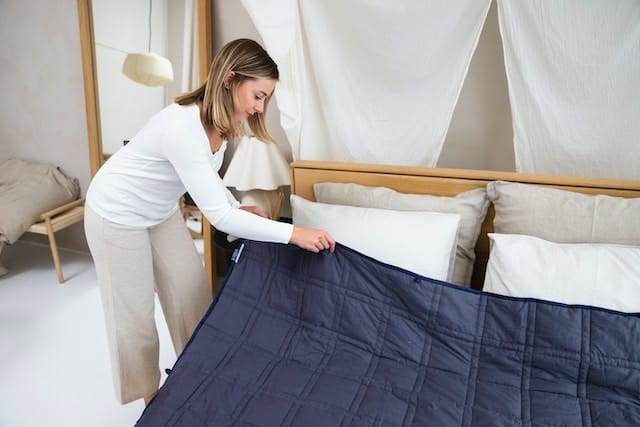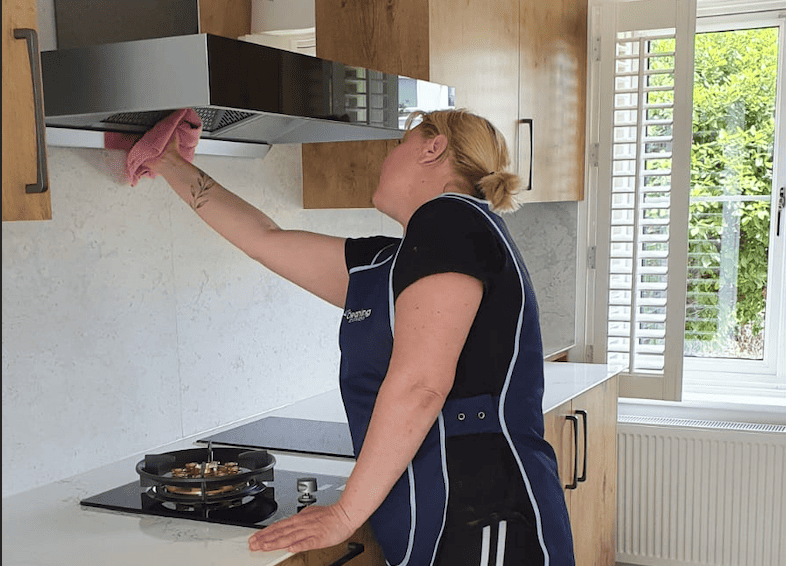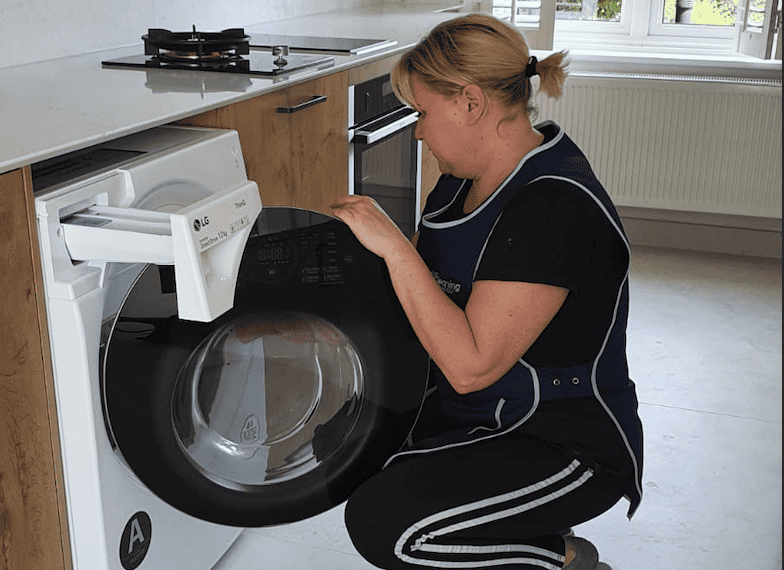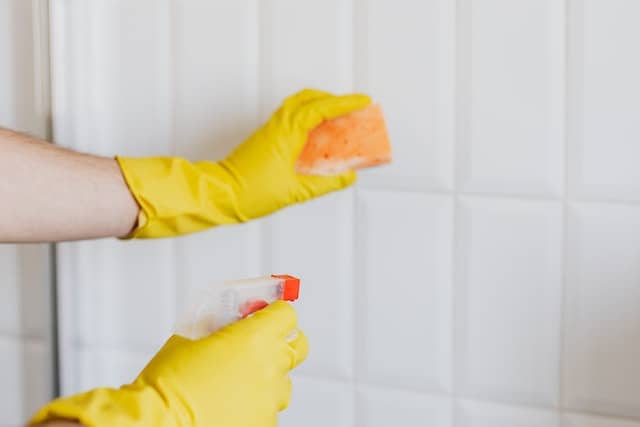Cleaning your carpet is probably a job that many of us overlook. After all, you probably hoover it weekly, and this generally does a decent enough job of keeping it clean. However, regular carpet shampooing is important to remove deep-seated dirt and allergens.
So, how often should you clean your carpet? This is what we’ll look at below, including specific considerations for pets, allergies, and high-traffic areas.

How Often Should You Shampoo Your Carpet?
Generally speaking, you should clean your carpet with shampoo and a wet vacuum, or similar setup, at least once a year. This is a minimum standard for all carpets to keep them fresh and free from allergens. However, high-traffic areas will need cleaning more regularly.
Carpets benefit from being shampooed alongside regular vacuuming because it helps to lift dirt, grime, odours and allergens far more effectively. Think about it this way: If you dry shampoo your hair, it’s sort of clean, but nowhere near as clean as properly washing and shampooing it. The same logic applies to your carpet.

How Much Does it Cost to Clean a Carpet
The cost of cleaning a carpet depends on several factors, such as the tools and products you plan to use, whether you rent or buy them, and even where you live. You can buy a carpet steam cleaner for about £100, but this isn’t as effective as a proper shampooer.
These will set you back several hundred pounds if you want to buy one (which isn’t really necessary). Instead, look to hire a cleaning local company. Carpet cleaning can range from £25 to £250 depending on how much carpet your home has.
More cost-effective options include dry products, such as odour-eliminating powders. You sprinkle these on and then vacuum them out. They’re never as effective as proper shampooing but are better than nothing if you’re on a tight budget.
How to Wash a Carpet
If you’ve decided to rent (or buy) a carpet cleaner, here are the general steps for how to wash a carpet. Bear in mind that these might differ depending on the product you’re using, so check if the supplier has specific instructions.
1. Prep the Area
First, make sure your carpet is ready to be washed. Start by removing as much furniture as you can from the room so you’ve got a nice open space to shampoo. Most carpet cleaners have fairly small heads, but you’ll want to make good use of the cleaner while you have it.
2. Vacuum Thoroughly
Next, you need to thoroughly vacuum the carpet. The easiest way to do this is to use the hose without any attachments, and get down on your hands and knees and give it a really good going over.
Make a couple of passes over the carpet from different angles to remove as much dust and debris as you can. Although the carpet cleaner will pick up anything you’ve missed, getting it clean reduces the risk of you clogging up the machine.
3. Spot Clean Problem Areas
For best results, you’ll want to pre-treat any stained areas, just as you would with laundry. You can buy spot treatment products online easily, or the place you rented your carpet cleaner from might stock them. Simply follow the instructions on the bottle.
4. Get Your Cleaner Ready
Typically, a carpet shampooer has a clean water tank and a dirty water tank. You need to fill the clean water tank before you start and add the required amount of cleaning solution. There are different types available, such as odour eliminating, pet-specific ones, and more. Make sure you pick the right one for your needs.
5. Work Slowly Across the Room
For best results, work in strips along the room. Press the cleaner’s trigger to inject water into the carpet. Move forwards in a line and then work your way back to thoroughly suck up the dirty water.
Repeat this process by moving the cleaner to a new line, pushing forwards and then pulling back. This is pretty much how you use a carpet cleaner!
6. Rinse the Carpet
This is an optional step that can help to remove any remaining dirt or cleaning solution. Once you’ve cleaned the room, refill the clean water tank just with water. Make another pass over the room as normal to inject clean water into the carpet.
7. Leave it to Dry
Finally, just let the carpet dry. If possible, open windows and put the heating on, as this’ll help the carpet to dry more quickly. You should expect it to take at least 4-6 hours, but it can take a day or two in colder or more humid conditions.
Remember that the longer it stays wet, the more likely it is to develop a damp smell. If necessary, set up a dehumidifier to speed up the process.
How Often Should You Clean Carpets? Allergy Sufferers
For normal carpets in homes where no one suffers from allergies, cleaning them once a year is enough. But if you have allergies, particularly seasonal ones, cleaning your carpets up to 4 times a year can be beneficial.
This ultimately depends on the type of allergies you suffer from. For example, if you have hayfever or other seasonal allergies, clean at the beginning and end of the problem season. But if you suffer from allergies related to dust and mould, 4 times a year can be helpful.
The process is no different for allergy carpet cleaning. Rent or buy a carpet cleaner and follow the instructions above. However, a steam cleaner could work fine for this, as it’ll do a decent job of lifting the problem debris from the carpet.
How Often Should You Shampoo Your Carpets If You Have Pets?
If you have pets, you should probably shampoo your carpets up to 4 times a year. This depends on factors such as how heavily your pet sheds and whether they have accidents in the house. For the latter, immediate spot treatment is necessary.
A carpet cleaner will do a much better job of lifting pet hair than a vacuum cleaner. However, make sure you only use pet-safe products, as you can never be too careful. Bear in mind that residual cleaning solution could be transferred to their paws and into their mouth.
If you want to learn more, please read our article about how to remove pet hair from carpets.
How Often Should You Wash Your Carpet? High Traffic Areas
High traffic areas are those that receive a lot of footfall, such as a living room, hallway, landing, stairwell, etc. These need cleaning more often because there will be more dirt and the carpet fibres will be pressed down more regularly. For these areas, 2-3 times a year should be enough. Regularly cleaning high-traffic areas will also help keep the carpet in good condition, extending its lifespan by a surprising amount.
How Long to Wait Before Vacuuming New Carpet?
You don’t have to wait before vacuuming a new carpet – you can theoretically hoover it as soon as it’s laid. Doing so helps to remove loose fibres that might have popped out while it was being laid. Assuming it’s been laid properly and is sufficiently tight, there’s no reason why it can’t be vacuumed immediately.
Final Thoughts
How often should you clean your carpet ultimately depends on where in the house it is, how much traffic it sees, and whether you have pets or allergies. At least once a year is enough, but doing it more often can help to keep it in good condition.
Of course, you need to also factor in the time required to do so as well as the cost of getting the equipment and cleaning products. But keeping your carpet properly clean will help to extend its lifespan and ensure your home looks clean and smells fresh.
You also hire a carpet cleaning service to clean your carpets without the added stress of cleaning, effort and time.


